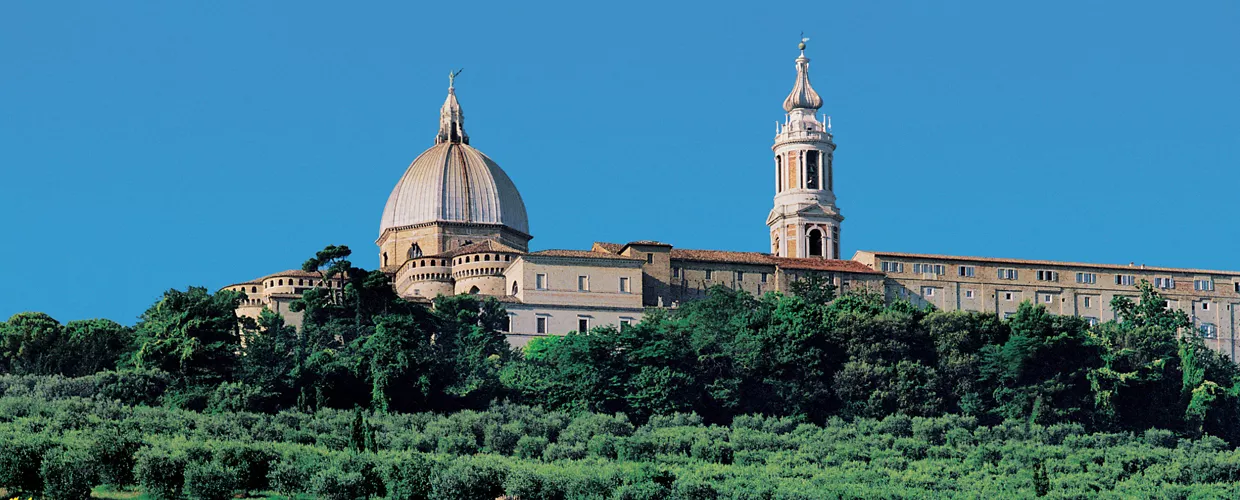This content was automatically translated. View the original text.

Overview
Famous throughout the world for its sanctuary of the same name, Loreto lies at the centre of the Marche region, in the province of Ancona. It offers relaxation, traditions, art and flavours to travellers and pilgrims passing through.
It does so thanks to the natural beauty found between the Conero Riviera and Leopardi's Colli dell'Infinito, passing through an unmissable crystal-clear sea. Loreto is considered, historically, a singular place: it is in fact a town created by the presence of a sanctuary, that of the Madonna di Loreto also known as Santa Casa, built between 1468 and 1587. But according to tradition, the history of the sanctuary began much earlier, on the night between 9 and 10 December 1294, when on the hill where the religious building would later be erected, the house that was said to have been inhabited by the family of the Virgin Mary in Nazareth and where Our Lady was supposed to have received the announcement of Jesus' birth was moved.
The discovery of the village can commence by following the walls built by Leo X to protect the 'Villa di Santa Maria in Loreto' from the assault of the Turks. Passing along Via Sisto V, one can observe silverware, religious objects, ceramics and textile works that trace the ancient tradition of Loreto craftsmanship alongside the 'madonnari' who draw on the ground, while, once through Porta del Palazzo Apostolico or Porta Marina, one can go in search of the fountains that over the centuries have provided refreshment for pilgrims.
The visit continues with the Belvedere or Piazzale Giovanni Paolo II, where you can admire the Musone Valley, the Rimembranza Park, Porta Romana, Piazza della Madonna, where all the main city monuments are located, and the Banderuola church, where tradition has it that the Holy House of the Madonna stopped before arriving on Monte Prodo.
Devoted pilgrims should visit the Pontifical Holy House Museum, the Benedict XVI Permanent Crib, the Holy Staircase and the Polish Cemetery. Special mention goes to the Museo Storico dell'Aeronautica, a collection of hundreds of original pieces from the birth of the Regia Aeronautica to the present day. It is no coincidence that the Black Madonna of Loreto is the patron saint of aviators: in Loreto on the night between 9 and 10 December since 1617, the 'Venuta' is celebrated, characterised by the 'focaraccio', or lighting of fires to light the way for the Virgin in flight from Palestine to the lands of the Marche, and for this reason she is considered the patron saint of the Italian Air Force.
60025 Loreto AN, Italia